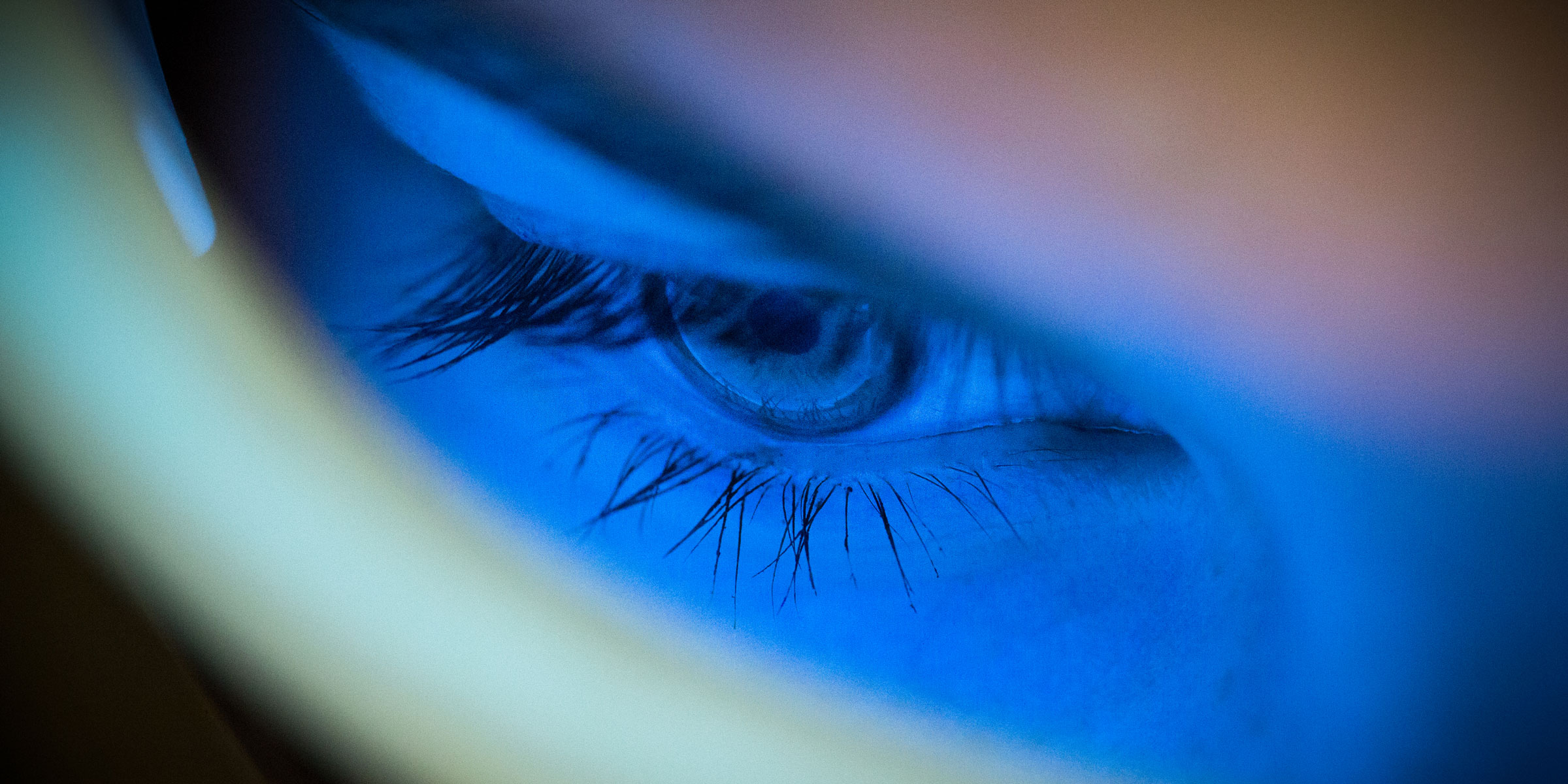Light at 40 Hz
Reversal of the Alzheimer disease
The Alzheimer disease is a progressive neurodegenerative illness affecting the brain. It is characterized by a loss of memory and a progressive deterioration of the cognitive functions such as the ability to reason, think in an abstract manner, understand and use language, and in behavior and mood changes.
The Alzheimer disease affects 8% of the population after 65 years.
The Alzheimer disease is caused by an abnormal accumulation of certain proteins in the brain, causing the death of brain cells. There is currently no known treatment for the Alzheimer disease.
For about a decade, however, purpose designed light therapy is appearing as capable of causing the regression of the Alzheimer disease.
A significant regression occurs thanks to light stimulation at a frequency of 40 Hz, using blue light at a determined wavelength. It should be noted that Blue light is being used for years by the PSiO technology to stimulate the neurons.
PSIO 3.0 glasses were designed in accordance with the conclusions and recommendations of the most recent academic studies on the Alzheimer disease.
Articles
- Stimulating the brain at 40 Hz to treat Alzheimer’s disease.
What if exposure to 40 Hz light and sound could promote a healthier brain? That’s the hypothesis of scientists at The Picower Institute for Learning and Memory at Massachusetts Institute of Technology (MIT).
[ Download the PDF for printing ] - 40Hz : the frequency that the brain loves and that fights Alzheimer's disease.
A specific frequency of 40 Hz plays a central role in brain function. The brain works best at this frequency, which also helps fight Alzheimer's disease.
[ Download the PDF for printing ] - The Idea Behind Using Masked 40 Hz, Light Based Brain Stimulation for Alzheimer Disease.
Marcus Carstensen, PhD candidate, CTO and co-founder of OptoCeutics in Copenhagen, Denmark, talked about the mechanisms of using noninvasive light technologies for Alzheimer disease treatment.
[ Download the PDF for printing ] - Alzheimer : des vibrations sonores quotidiennes pour freiner sa progression ?
Valisoa Rasolofo & J. Paiano. Source : Frontiers.
[ Download the PDF for printing ] - 40 Hz vibrations reduce Alzheimer’s pathology, symptoms in mouse models
Support for the study came from The JPB Foundation, The Picower Institute for Learning and Memory, Eduardo Eurnekian, The DeGroof-VM Foundation, Halis Family Foundation, Melissa and Doug Ko Hahn, Lester Gimpelson, Eleanor Schwartz Charitable Foundation, The Dolby Family, Kathleen and Miguel Octavio, Jay and Carroll Miller, Anne Gao and Alex Hu and Charles Hieken.
[ Download the PDF for printing ]
Studies
- Early-life stress lastingly alters the neuroinflammatory response to amyloid pathology in an Alzheimer's disease mouse model.
Lianne Hoeijmakers, Silvie R Ruigrok, Anna Amelianchik, Daniela Ivan, Anne-Marie van Dam, Paul J Lucassen, Aniko Korosi.
This indicates that, at least in a genetic context, ES could aggravate AD pathology.
[ Download the PDF for printing ] - Gamma Frequency Inhibits the Secretion and Aggregation of Amyloid-β and Decreases the Phosphorylation of mTOR and Tau Proteins in vitro.
Yuan-Han Yang, Sun-Wung Hsieh, Hsi-Wen Chang, Jia-Li Sung, Chih-Pin Chuu, Chen-Wen Yen, Tzyh-Chyuan Hour.
Our study showed 40 Hz gamma frequency involved in the inhibition of secretion and aggregation of Aβ and inhibition of p-Tau protein expression through the mTOR/4E-BP1/Tau signaling pathway.
[ Download the PDF for printing ] - Physical exercise during exposure to 40-Hz light flicker improves cognitive functions in the 3xTg mouse model of Alzheimer's disease : results show that exercising in a 40-Hz light flickering environment may improve cognitive functioning by reducing Aβ and tau levels, thereby enhancing mitochondrial function and neuroplasticity.
Sang-Seo Park, Hye-Sang Park, Chang-Ju Kim, Hyun-Sik Kang, Dong-Hyun Kim, Seung-Soo Baek, Tae-Woon Kim.
[ Download the PDF for printing ] - Combined effects of aerobic exercise and 40-Hz light flicker exposure on early cognitive impairments in Alzheimer's disease of 3×Tg mice.
Sang-Seo Park, Hye-Sang Park, Chang-Ju Kim, Seung-Soo Baek, Song-Young Park, Cody Anderson, Myung-Ki Kim, Ik-Ryeul Park, Tae-Woon Kim.
Exercising in a 40-Hz light flicker environment was more effective than exercise or 40-Hz light flicker alone. This synergistic effect may prevent cognitive dysfunction by inhibiting Aβ, tau pathway, and neuroinflammation and enhancing neuroplasticity and mitochondrial functions in the hippocampus during early Alzheimer's disease.
[ Download the PDF for printing ] - 40 Hz Light Flicker Promotes Learning and Memory via Long Term Depression in Wild-Type Mice.
Tian Tian, Xin Qin, Yali Wang, Yan Shi, Xin Yang.
[ Download the PDF for printing ] - Alzheimer's Disease Treatment With Combination of 40Hz Light and Cognitive Therapy (AlzLife).
[ Download the PDF for printing ] - 40-Hz steady state response in Alzheimer's disease and mild cognitive impairment.
J.A. van Deursen, E.F.P.M. Vuurman, V.H.J.M. van Kranen-Mastenbroek, F.R.J. Verhey, W.J. Riedel.
[ Download the PDF for printing ] - The Effects of Long-Term 40-Hz Physioacoustic Vibrations on Motor Impairments in Parkinson’s Disease: A Double-Blinded Randomized Control Trial
Healthcare (Basel). 2020 Jun. Abdullah Mosabbir, Quincy J. Almeida, and Heidi Ahonen.
[ Download the PDF for printing ]
